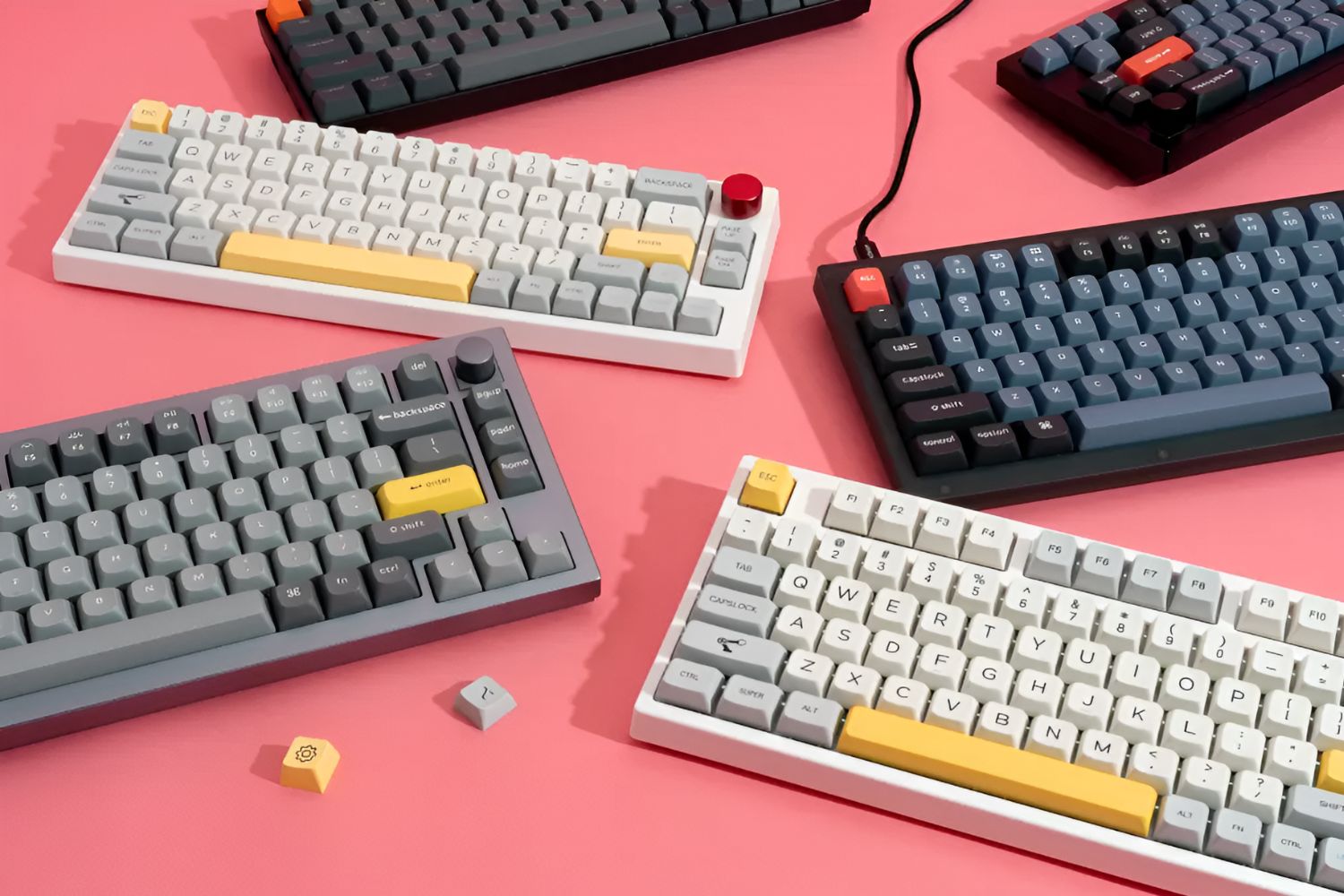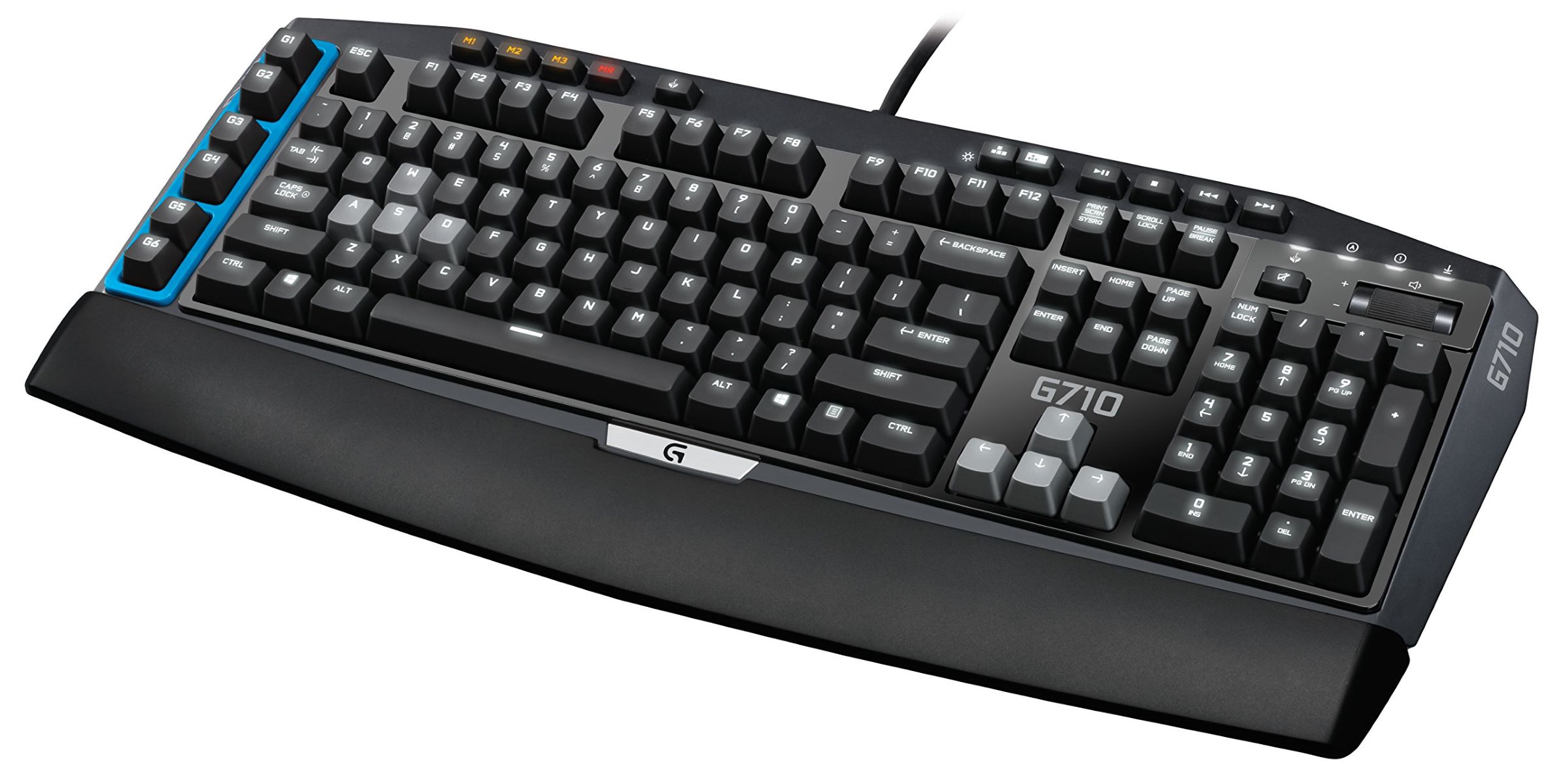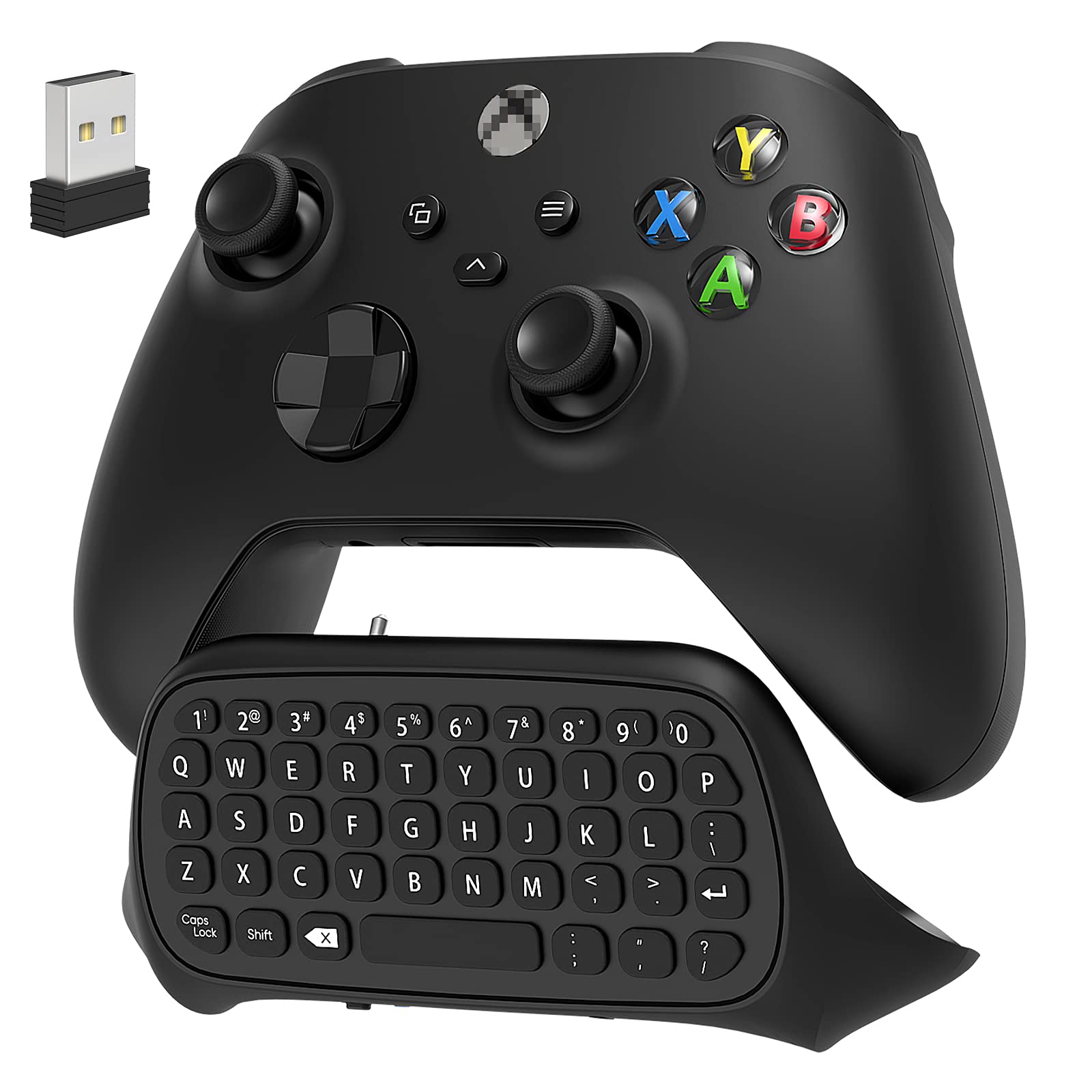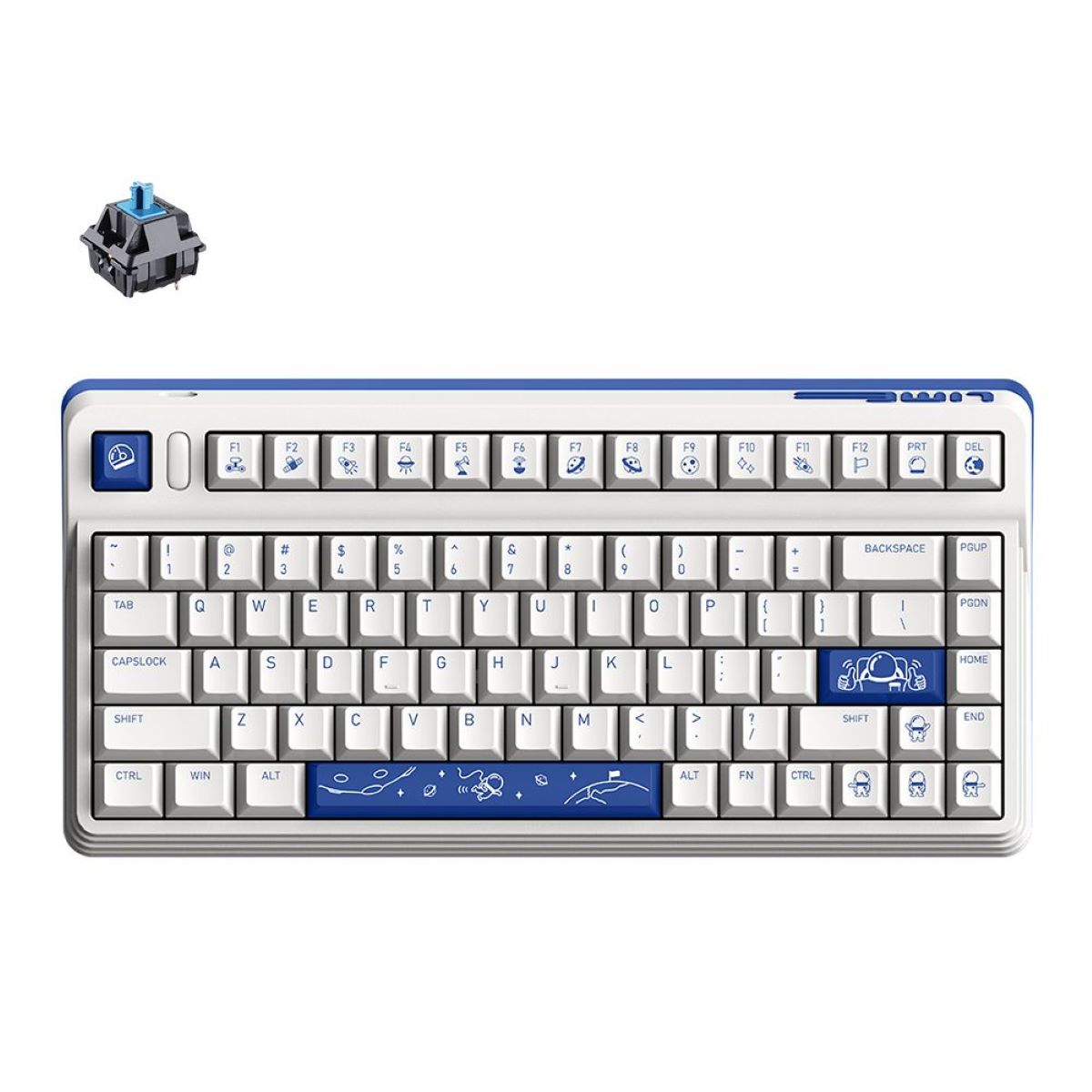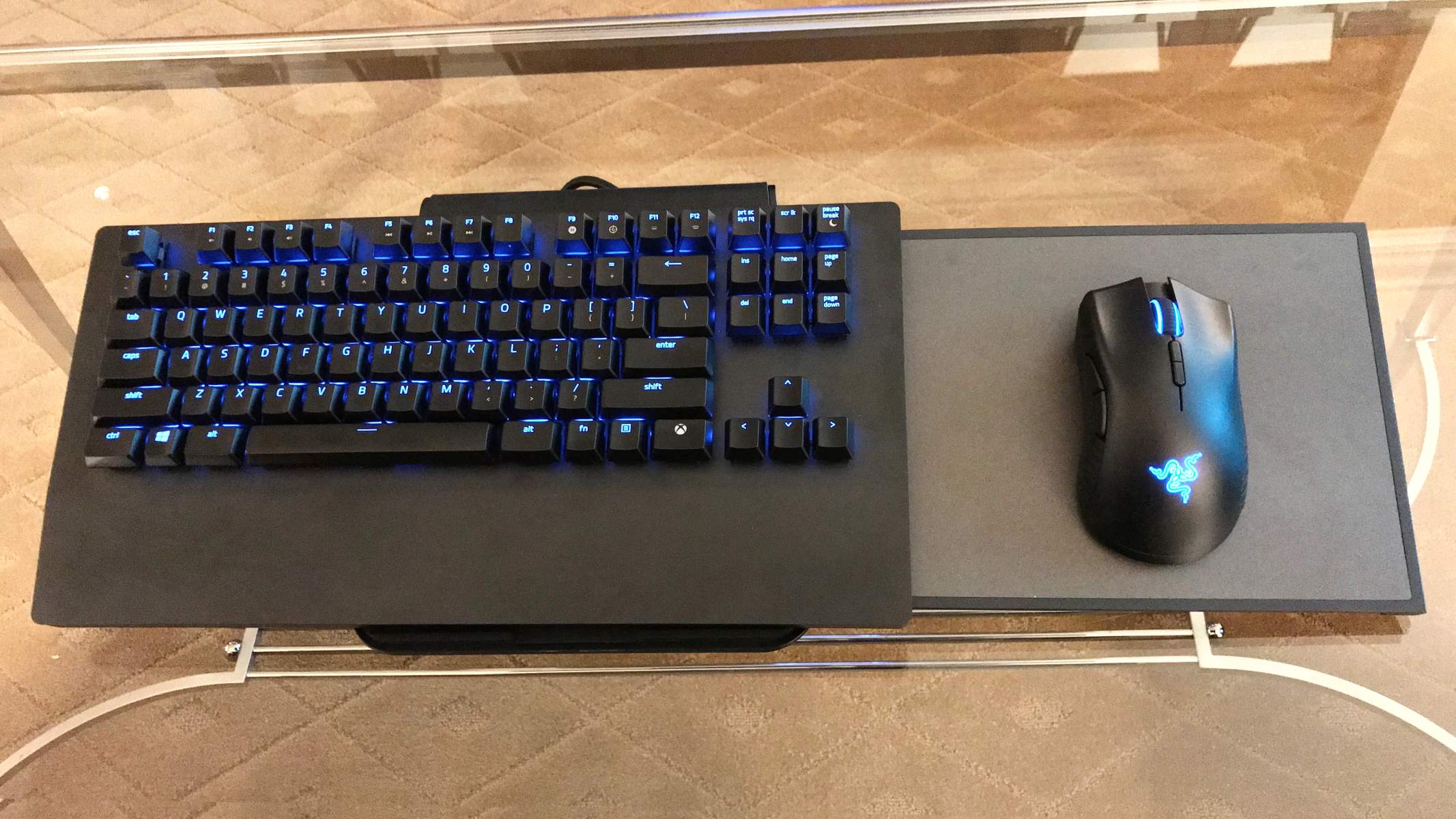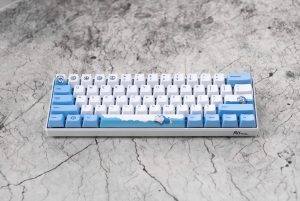Introduction
When it comes to typing, the auditory experience can be just as important as the tactile one. Mechanical keyboards have gained popularity not only for their responsive key switches and durability but also for the satisfying sound they produce. Whether it's the crisp click of a blue switch or the smooth thock of a lubed linear switch, the acoustics of a mechanical keyboard can greatly enhance the typing experience.
In this guide, we will explore various techniques to make a mechanical keyboard sound nice. From choosing the right switches to customizing keycaps, we'll delve into the world of keyboard modification to achieve that perfect sound profile. Whether you're a keyboard enthusiast looking to enhance your typing experience or a newcomer eager to explore the world of mechanical keyboards, these tips will help you achieve the auditory satisfaction you desire.
The sound of a mechanical keyboard can be a deeply personal preference. Some prefer a subtle, muted sound, while others enjoy a more pronounced, clicky sound with each keystroke. Regardless of your preference, there are several methods to achieve the ideal sound for your mechanical keyboard. By understanding the factors that contribute to keyboard sound and exploring the techniques for modification, you can tailor the acoustics to your liking.
Throughout this guide, we'll discuss the importance of choosing the right switches, the process of lubing switches to reduce friction and enhance sound, the addition of dampening materials to minimize reverberation, and the customization of keycaps to further personalize the sound profile. Each of these elements plays a crucial role in shaping the auditory feedback of a mechanical keyboard, and by carefully considering and implementing these modifications, you can achieve a keyboard sound that resonates with your preferences.
So, whether you're aiming for a keyboard that whispers with each keystroke or one that announces your every input with a satisfying click, join us as we explore the art and science of making a mechanical keyboard sound nice. Let's embark on this sonic journey to unlock the full potential of your mechanical keyboard's auditory allure.
Choosing the Right Switches
One of the most fundamental aspects of creating a pleasing keyboard sound is selecting the right switches. Key switches are the mechanisms beneath the keys that register each keystroke, and they come in various types, each with its own unique sound profile. The three primary switch types are linear, tactile, and clicky, and each offers distinct auditory and tactile feedback.
Linear switches, known for their smooth and consistent keystrokes, produce a relatively quiet sound, making them a popular choice for those seeking a more subdued typing experience. Tactile switches, on the other hand, provide a noticeable bump upon actuation, offering both tactile and auditory feedback. Clicky switches, characterized by an audible click as the key is pressed, deliver a pronounced sound with each keystroke, resulting in a more pronounced auditory experience.
When selecting switches to achieve a specific sound profile, it’s important to consider not only the sound produced upon actuation but also the sound of the switch resetting and bottoming out. Some switches may produce a more pronounced sound at the point of reset, while others may generate a more prominent sound when bottoming out. By understanding these nuances, you can select switches that align with your desired auditory experience.
Additionally, the material of the key switch housing can impact the sound produced. Switches with housings made of different materials, such as polycarbonate or nylon, can yield variations in sound due to their acoustic properties. Furthermore, the type of stem and spring used in a switch can also influence the resulting sound, with different materials and designs producing distinct auditory effects.
Ultimately, the task of choosing the right switches to create a pleasing keyboard sound involves a consideration of both the sound characteristics of the switches themselves and how they interact with the keyboard’s construction. By carefully evaluating the sound profiles of different switch types and understanding the impact of materials and design elements, you can make an informed decision that aligns with your auditory preferences.
Lubing the Switches
When it comes to optimizing the sound of your mechanical keyboard, lubing the switches can play a pivotal role in enhancing both the acoustics and the feel of each keystroke. Lubrication reduces friction between the moving parts of the switch, resulting in a smoother actuation and dampening of the sound produced during key presses and releases.
There are various types of lubricants available for this purpose, with popular options including thin, lightweight lubes for linear switches and thicker, more viscous lubes for tactile and clicky switches. The application of lube to the switch housing, stem, and springs can significantly reduce the scratchiness and rattling sounds that may occur during typing, resulting in a more refined and pleasant auditory experience.
When lubing switches, it’s important to apply the lubricant sparingly and evenly to avoid any adverse effects on the switch’s performance. Over-lubrication can lead to a mushy or sluggish feel when typing, while uneven application may result in inconsistent sound and feel across the keyboard. By carefully and precisely lubricating the moving parts of each switch, you can achieve a more consistent and satisfying sound profile while maintaining the switch’s tactile feedback.
In addition to reducing friction and minimizing unwanted noise, lubing the switches can also contribute to the longevity of the keyboard by protecting the internal components from wear and tear. The smoother operation resulting from proper lubrication can reduce the stress on the switch mechanisms, potentially extending the lifespan of the keyboard and preserving its optimal performance over time.
Furthermore, the process of lubing switches provides an opportunity for keyboard enthusiasts to customize the sound and feel of their keyboards according to their preferences. By experimenting with different types and amounts of lubricants, individuals can fine-tune the acoustics of their keyboards to achieve a sound that aligns perfectly with their desired auditory experience.
Whether aiming for a quieter, more refined sound or seeking to enhance the smoothness of each keystroke, the careful application of lubricants to mechanical switches offers a versatile and effective method for shaping the auditory and tactile characteristics of a mechanical keyboard. By incorporating this technique into the keyboard modification process, enthusiasts can elevate the overall typing experience and create a keyboard that not only sounds nice but also feels exceptional.
Adding Dampening Material
In the pursuit of achieving an optimal keyboard sound, the addition of dampening materials can significantly impact the acoustics of a mechanical keyboard. Dampening materials are designed to reduce reverberation, minimize resonance, and absorb excess sound energy, resulting in a quieter and more refined auditory experience.
One common method of dampening keyboard sound is the application of sound-absorbing foam or silicone dampening strips within the keyboard’s housing. These materials effectively dampen the sound produced by the resonance of the switch mechanisms and the reverberation within the keyboard’s enclosure, resulting in a reduction of the overall noise level. By strategically placing these dampening materials within the keyboard, enthusiasts can achieve a more muted and pleasant sound profile without compromising the tactile feedback of the switches.
Furthermore, the addition of dampening materials can help mitigate the sound of the switch bottoming out, which is particularly beneficial for individuals seeking a quieter typing experience. By reducing the impact noise when the key reaches the bottom of its travel, these materials contribute to a more subdued and refined sound, making the keyboard more suitable for shared or noise-sensitive environments.
Another approach to dampening keyboard sound involves the use of case foam, which is placed between the PCB (printed circuit board) and the bottom housing of the keyboard. This foam serves to absorb sound and vibrations, resulting in a dampened and more controlled auditory output. Additionally, case foam can contribute to a more solid and premium feel when typing, enhancing the overall typing experience beyond just the sound aspect.
When incorporating dampening materials into a mechanical keyboard, it’s essential to consider the balance between sound reduction and the preservation of the keyboard’s tactile feedback and typing feel. While the primary goal is to achieve a more pleasing sound profile, it’s important to ensure that the addition of dampening materials does not compromise the keyboard’s responsiveness or introduce unintended changes to the typing experience.
By carefully selecting and strategically placing dampening materials, keyboard enthusiasts can tailor the acoustics of their mechanical keyboards to align with their desired auditory preferences. Whether aiming to create a quieter and more refined sound or seeking to minimize the impact noise of each keystroke, the addition of dampening materials offers a versatile and effective method for shaping the auditory characteristics of a mechanical keyboard.
Customizing Keycaps
Customizing keycaps presents an opportunity to not only enhance the visual aesthetics of a mechanical keyboard but also to influence its sound profile. The material, profile, and thickness of keycaps can all contribute to the acoustics of typing, offering a means to tailor the sound to one’s preferences while adding a personalized touch to the keyboard’s appearance.
One of the key factors to consider when customizing keycaps for sound is the material from which they are crafted. Different materials, such as ABS (acrylonitrile butadiene styrene), PBT (polybutylene terephthalate), or even more exotic options like POM (polyoxymethylene) or resin, can produce varying sound profiles when typing. For example, PBT keycaps are known for their denser and more muted sound compared to the higher-pitched sound often associated with ABS keycaps.
Furthermore, the thickness of the keycaps can impact the sound they produce. Thicker keycaps tend to produce a deeper and more solid sound, while thinner keycaps may result in a higher-pitched and more resonant sound. By selecting keycaps with the desired thickness and material, enthusiasts can effectively shape the acoustics of their keyboards to align with their auditory preferences.
Keycap profile, which refers to the shape and contour of the keycaps, also plays a role in the sound and feel of typing. Different profiles, such as OEM, Cherry, SA, or DSA, can influence the sound produced as the key is pressed and released. For example, spherical or cylindrical profiles may result in a different sound compared to flat or contoured profiles, offering enthusiasts a range of options to explore in their quest for the perfect auditory experience.
In addition to material, thickness, and profile, the design and construction of keycaps can also impact the sound of typing. Keycaps with a more sculpted or textured surface may produce a unique sound and feel during typing, adding an extra dimension to the auditory experience. Additionally, the inclusion of sound-dampening features within keycaps, such as internal foam or cushioning, can further influence the acoustics of typing, providing an additional avenue for customization.
By carefully selecting and customizing keycaps, enthusiasts can not only personalize the visual appearance of their mechanical keyboards but also fine-tune the sound profile to align with their auditory preferences. Whether aiming for a quieter and more refined sound or seeking to enhance the tactile and auditory feedback of each keystroke, the customization of keycaps offers a versatile and effective method for shaping the auditory characteristics of a mechanical keyboard.
Conclusion
As we conclude our exploration of making a mechanical keyboard sound nice, it becomes evident that the auditory experience of typing is a multifaceted and customizable aspect of the overall keyboard experience. By carefully considering and implementing various techniques, enthusiasts can tailor the sound profile of their mechanical keyboards to align with their unique auditory preferences.
From the crucial task of choosing the right switches to the meticulous process of lubing switches to reduce friction and enhance sound, each step in the modification journey contributes to the shaping of the keyboard’s acoustics. The addition of dampening materials further refines the sound profile, reducing reverberation and resonance to achieve a more subdued and pleasant auditory experience. Additionally, customizing keycaps offers a means to not only enhance the visual aesthetics of the keyboard but also to influence its sound profile, adding a personalized touch to the auditory experience.
Throughout this guide, we’ve emphasized the importance of balance and customization when it comes to shaping the sound of a mechanical keyboard. Each modification, whether it’s the selection of switches, the application of lubricants, the addition of dampening materials, or the customization of keycaps, offers an opportunity for enthusiasts to fine-tune the acoustics to their liking while preserving the keyboard’s tactile feedback and responsiveness.
It’s important to recognize that the pursuit of a pleasing keyboard sound is a deeply personal endeavor, with enthusiasts seeking a range of auditory experiences, from subtle and muted to pronounced and clicky. The diversity of preferences within the keyboard community underscores the versatility and adaptability of mechanical keyboards, allowing for a wide spectrum of sound profiles to suit individual tastes.
Ultimately, the art and science of making a mechanical keyboard sound nice is a journey of exploration and customization, where enthusiasts can unlock the full potential of their keyboards’ auditory allure. By understanding the impact of each modification and carefully tailoring the acoustics to align with their preferences, keyboard enthusiasts can achieve a truly personalized and satisfying auditory experience with every keystroke.







